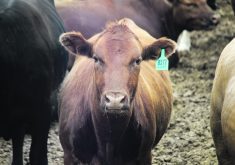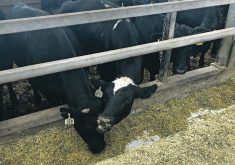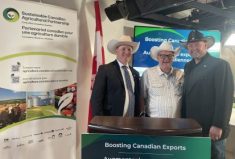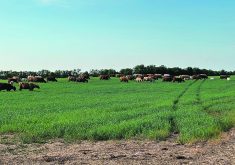The beef cattle cycle is playing true to form and as we hit what might be the top of the fed cattle price curve, the peak is pushed higher by the recent experience of drought and high feed prices.
Chicago fed and live cattle futures hit record highs last week and that will likely push up the price of beef at a time when consumers are already shocked at the level of food inflation.
In Canada, there has been a lot of condemnation of grocery retailers for raking in high profits, adding to families’ cost of living.
Excessive profits are a concern, but we must also admit that recent food inflation is strongly caused by shortages of a large range of food types because of weather problems. Disruptions caused by COVID and measures taken to control it also pushed prices higher.
In the case of cattle and beef, the shortages are linked to the long established cattle cycle, where numbers wax and then wain over a period of 10 years, give or take a year or two.
The Jan. 1 cattle inventory reports in Canada and the United States tell the story and show that cattle and beef prices will likely be strong while the industry enters the rebuilding part of the cycle.
The number of beef cows in the U.S. at the start of the year was 28.9 million, slightly lower than the last nadir in the cycle in 2014. Indeed, the number was the lowest since 1962.
In Canada, the beef cow herd was down about one percent from last year and was the smallest since the early 1990s.

Dry weather in many parts of North America the last two years withered pastures, meaning producers had to provide supplemental feed and forage, the cost of which had soared because of the dry weather.
That provided strong incentive for cow-calf producers to cull herds.
If better rainfall returns to North America this summer, cattle producers will likely retain more heifers for breeding to rebuild herds and that will take more cattle out of the slaughter stream. And reduced slaughter means less meat will be produced.
The U.S. Department of Agriculture forecasts U.S. beef production for the current year will fall to 12.2 million tonnes (carcass weight equivalent) from 12.9 million in 2022, a decline of 5.3 percent. It will be the first year of beef production decline since 2015. The 12.9 million tonnes produced last year was record large.
It sees Canadian beef production falling to 1.375 million tonnes from 1.395 million in 2022, down 1.4 percent.
A lot of the culled cows are going to slaughter in the first and second quarters of this year, inflating slaughter numbers. This is offsetting the fact that carcass weights in the U.S. on average this year have been smaller than last year.

These lower carcass weights in the U.S. partly explain why U.S. cash markets last week were on fire with American packers scrambling to get feeders to part with their inventory.
By contrast, carcass weights in Canada did not fall so quickly and are only now well below year-ago levels.
This could explain why, although fed cash prices here are also easily surpassing the previous 2015 highs, the Alberta price last week was $21.55 per cwt. less than in Nebraska, according to Canfax. The April five-year average cash basis is -$6.30 per cwt.
The USDA in its April World Agriculture Supply and Demand Estimates report forecasts that the average American beef carcass price in the second quarter of this year will be US$169 per cwt., up from about $142 in the same period last year. Prices typically peak in the second quarter because carcass weights seasonally decline into May and demand picks up with the start of outdoor grilling.
Even at these high prices, and with consumers complaining about food inflation, beef consumers still seem willing to pay up to enjoy the taste.
And domestic demand is augmented by exports, which are likely to be smaller for the U.S. than last year, but still strong compared to levels of only a few years ago.
The USDA forecasts Canada’s beef exports to be about the same as 2022 and down only a little from the record year of 2021.
The next couple of years should be profitable times for cattle producers.
In Canada, the question will be whether the herd rebuilds this time. It did not in the profitable portion of the last cattle cycle.
With our colder climate, it is harder to raise cattle here than in Kansas. There is a shortage of agricultural labour and when cow-calf producers retire, it is often more economical for a crop farmer to take over the land.















